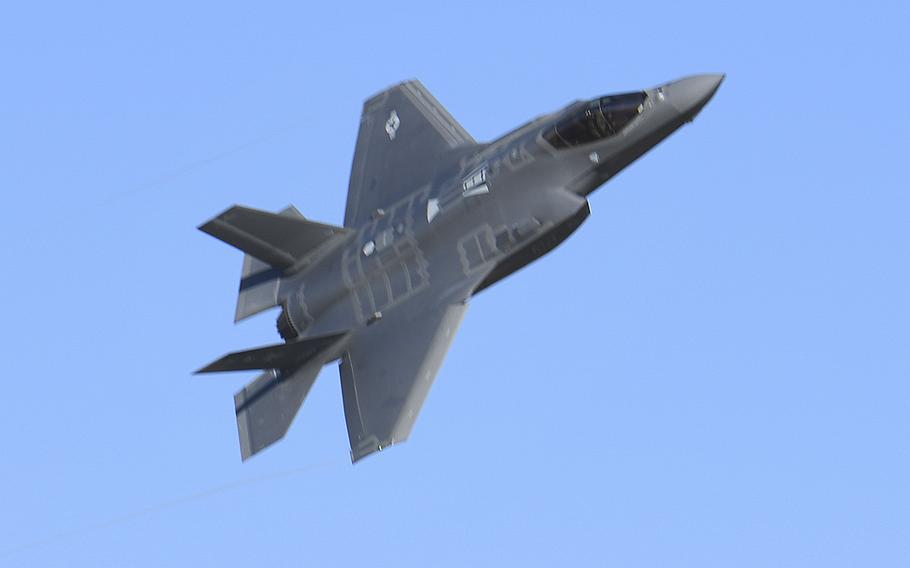
An F-35 Lightning II performs aerial maneuvers during a combat power exercise at Hill Air Force Base Nov. 19, 2018. (James Kennedy/U.S. Air Force)
The world’s most expensive weapons program — the US’s F-35 fighter jet — got even more costly, according to the Pentagon.
The program to develop and procure the plane will cost a total of $438 billion, up $26 billion from the last estimate a year ago, according to the F-35’s new Selected Acquisition Report released Monday.
The 6.5% increase is actually relatively modest by the standards of the program, which originally was $233 billion when Lockheed Martin Corp. won the contract in 2001.
“The cost data in question was driven after accounting for inflation” and readjustment of the Air Force, Navy and Marine Corps production plans, which extend from 2044 to 2049, the program office said in a statement. The new estimate does not change the total number of planned aircraft, which includes 14 development jets and 2,456 production models for the U.S., it said.
The so-called per-jet “program acquisition unit cost” that includes development and production dollars when calculated in what budget analysts call inflation-adjusted “then year” dollars has increased to $179 million a jet from $166 million in the last year, according to the SAR.
The $26 billion increase is equivalent to what Congress has appropriated under the Ukraine Security Assistance Initiative to support Kyiv’s fight against Russia’s invasion. It also roughly equals this year’s budget request for NASA, the space agency.
Separately, the Pentagon said the F-35, which has faced numerous delays, passed a key milestone last month when it completed testing in an advanced Pentagon simulator, spokesman Russell Goemaere said in a statement. The simulations were designed to determine whether the plane is up to countering the top Russian and Chinese air defenses and fighters, and their results counted for 42% of the evaluation needed for a passing grade.
The testing is part of legally required evaluation before Bethesda, Md.-based Lockheed can proceed with full-rate production. Of a potential fleet of 3,000 or more F-35s for the U.S. and international customers, at least 965 have been delivered. Many of those may need to be retrofitted based on findings from the tests.
The F-35 was supposed to fly the 64-sorties exercise in 2017 but it was postponed for years because of unresolved technical problems in the “Joint Simulation Environment” test facility compounded by the COVID pandemic. The Pentagon test office plans to deliver its test report no later than 90 days after the completion but doesn’t plan to publish an unclassified summary, it said.